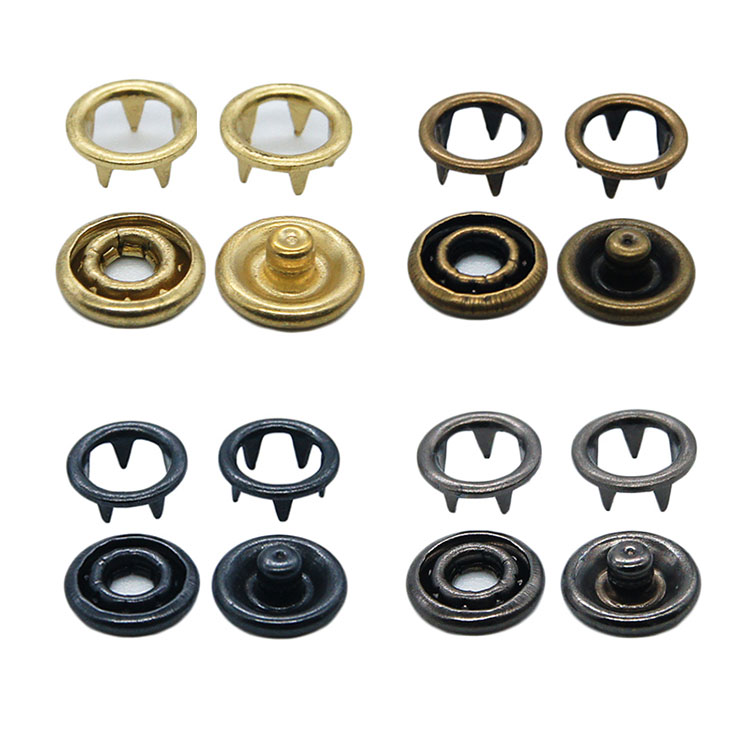Tailoring Precision: Exploring Variations in Hollow Prong Snap Button Designs for Diverse Applications
2024-01-18
Introduction:
The adaptability and versatility of hollow prong snap buttons lie not only in their functionality but also in the nuances of their design. Across various applications, designers have embraced variations in the hollow prong design to cater to specific needs and purposes. In this blog post, we delve into the world of hollow prong design variations and how they serve distinct purposes in different applications.
1. Hollow Prong Length:
- One of the primary variations in hollow prong design is the length of the prongs. Different applications may require prongs of varying lengths to accommodate materials of different thicknesses. Shorter prongs are suitable for thinner fabrics, while longer prongs provide the reach needed for thicker layers or multiple materials.
2. Number of Prongs:
- Hollow prong snap buttons may come with different numbers of prongs. While the standard design often features four prongs, variations can include buttons with two or more prongs. The choice of the number of prongs depends on the specific application requirements and the desired level of fastening security.
3. Prong Shape and Configuration:
- The shape and configuration of the prongs can vary. Some hollow prong snap buttons have straight prongs, while others may feature curved or angled prongs. The design of the prongs influences how the button engages with the material and can impact the overall aesthetic of the fastening.
4. Prong Thickness:
- Variations in the thickness of the prongs contribute to the overall durability and stability of the fastening. Thicker prongs may be employed in applications where additional strength is required, providing robustness and longevity to the hollow prong snap button.
5. Spring-Loaded Mechanism:
- While the spring-loaded action is a common feature in hollow prong snap buttons, the design of the spring mechanism may vary. Some buttons have a more pronounced spring action, ensuring a stronger grip, while others may have a lighter spring for applications where a delicate touch is needed.
6. Material of Construction:
- The choice of materials for the hollow prong design can vary. While brass is a common material due to its corrosion resistance and durability, variations may incorporate different alloys or materials to meet specific performance requirements. The material choice impacts factors such as strength, weight, and adaptability.
7. Decorative Elements:
- In fashion and accessories, variations in hollow prong design may include decorative elements. Buttons with embellished or engraved prongs add aesthetic value, serving not only as functional fasteners but also as decorative components enhancing the overall design.
8. Locking Mechanisms:
- Some variations in hollow prong snap button design may include locking mechanisms. These mechanisms can provide an additional layer of security, preventing unintentional disengagement. Locking variations are often employed in applications where a more secure closure is crucial.
Conclusion:
Variations in hollow prong snap button design reflect the nuanced approach designers take to tailor fastening solutions to diverse applications. Whether adjusting prong length, number, shape, or incorporating decorative elements, these variations ensure that hollow prong snap buttons are not only functional but also optimized for specific purposes. As designers continue to innovate, the world of hollow prong snap buttons evolves, offering a spectrum of options that align with the unique demands of industries ranging from fashion to automotive and beyond.



